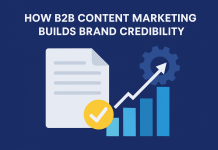In the B2B commerce, SaaS solutions have become essential for businesses looking to enhance productivity, streamline operations, and gain a competitive edge. These cloud-based services offer flexibility, scalability, and cost-efficiency, making them a go-to option for B2B professionals. Implementing the right SaaS solutions can lead to significant business growth and success.
Here are 11 best practices to help B2B professionals maximize the benefits of SaaS solutions:
1. Align SaaS Solutions with Your Business Objectives
Start by clearly identifying your business goals, whether it’s optimizing customer relationship management, improving collaboration, or automating financial processes. By Aligning SaaS solutions with your strategic objectives, you ensure that every solution supports your long-term growth and provides a high return on investment.
2. Prioritize Scalability
Your business needs will evolve, and so should your SaaS strategy. Choose solutions that offer scalability to support your growing business without sacrificing performance. Opt for flexible pricing plans and features that can adapt to increasing workloads and new business demands.
3. Ensure Seamless Integration
For SaaS to deliver maximum value, it must integrate smoothly with your existing tools and systems. Seek solutions with strong integration capabilities and robust APIs to eliminate data silos and improve workflow efficiency. Efficient integration enhances automation and streamlines business operations.
4. Focus on User Experience
Ease of use is critical for adoption. A user-friendly interface with an intuitive design ensures that your team can quickly learn and use the software with minimal training. Prioritize SaaS solutions that offer a seamless user experience, as this will drive higher engagement and productivity.
5. Prioritize Security and Compliance
Data security is paramount. Ensure that the SaaS provider follows strict security measures such as encryption, regular audits, and role-based access controls. Verify that they comply with regulatory standards such as GDPR, HIPAA, or industry-specific compliance needs to safeguard sensitive information.
6. Evaluate Customer Support Services
Great customer support can make all the difference. Choose a SaaS provider that offers 24/7 support, detailed documentation, and access to community forums. Prompt and reliable support ensures you can resolve technical issues quickly, reducing downtime and boosting efficiency.
7. Monitor Performance Regularly
Tracking the performance of your SaaS solutions is essential for ensuring that they deliver the expected benefits. Use analytics and reporting features to monitor key performance indicators such as system uptime, user engagement, and ROI. This data will help you adjust strategies and optimize usage.
8. Stay Updated with the Latest Features
SaaS providers frequently release updates to improve performance and security. Regular updates ensure that your business leverages the latest features, functionality, and security enhancements, helping you maintain a competitive advantage.
9. Enhance Collaboration Across Teams
SaaS tools that promote seamless collaboration between teams, departments, and external partners are crucial for B2B success. Look for solutions that offer real-time communication features such as file sharing, project management, and instant messaging to foster collaboration.
10. Offer Comprehensive Training and Onboarding
Effective use of SaaS tools depends on proper training. Ensure that your team is well-versed in using the software by offering initial training sessions and regular updates as new features are introduced. Well-trained employees will make the most of the SaaS solutions, improving overall performance.
11. Measure ROI and Make Informed Decisions
Continuously evaluate the ROI of your SaaS solutions to ensure they are meeting your business needs. Use data-driven insights to assess the value of your SaaS tools and identify areas for improvement. Regularly revisiting your SaaS strategy ensures it remains aligned with your evolving business goals.
Conclusion:
Achieving success with SaaS solutions requires a strategic approach that aligns with your business goals and embraces scalability, security, and integration. By focusing on user experience, fostering collaboration, and measuring performance, you can leverage SaaS to drive growth in the competitive B2B landscape. Embrace these best practices to optimize your SaaS strategy for sustained success.
I hope you find the above content helpful. For more such informative content please visit B2B Reports.









